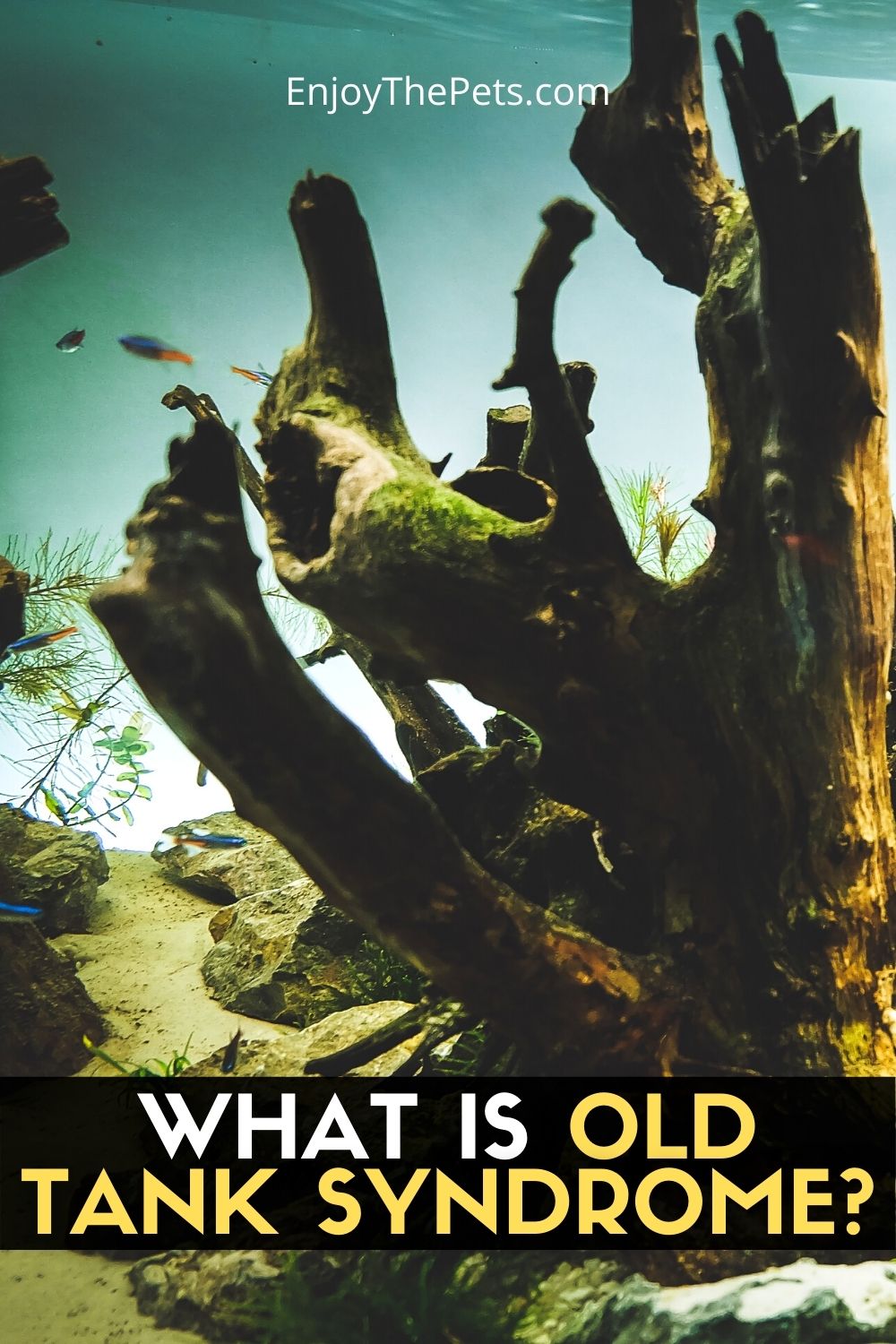What Is Old Tank Syndrome?

Hello, how are you today? Welcome to our blog About Pets. We hope you are very well and looking forward to a new post about Pets.
Today we want to share with you a special post:
How do I get rid of old tank syndrome?
Old tank syndrome is a condition in which the aquarium environment has degraded over time, specifically the chemistry of the water.
Aside from some cases of algae overgrowth, there are generally few visible indications of significant changes in water parameters. However, water tests will show a different picture.
Signs and symptoms
Nitrates and phosphates will increase significantly. The pH, GH (general hardness), and kH (carbonate hardness) will be quite different from the water supply.
Generally, the pH will become increasingly acidic over time. A drop in pH is often a sign of old tank syndrome.
Owners can assume that everything is fine, because their fish are still alive, or at least most of them are. However, when new fish are added, they usually die in a short time.
The deaths can be attributed to the fish, rather than the underlying problem of old tank syndrome. Some homeowners may have a clue that something is wrong at this point and perform a massive cleanup.
The result is usually the death of more fish. Why? Because fish have been subjected to rapidly changing water conditions.
Causes
Understanding the causes of old tank syndrome is as simple as understanding that your aquarium is a closed environment.
Like a new home, a new tank is clean and pristine. Like in a house, things get complicated once someone moves in, in this case, the fish.
Excess food and fish droppings fall to the bottom of the tank and accumulate in the gravel or are absorbed by the filter. The water evaporates and leaves residue on the glass.
At home, you clean the old trash from the refrigerator, vacuum the floors, and take out the trash. Who does that for the aquarium? If you don't, no one does.
Anything that goes into the tank stays in the tank in some form until you take steps to remove it. When the aquarium owner does not perform regular maintenance, the tank gradually accumulates waste material that changes the chemistry of the water.
Although the filter will remove most of the waste particles from the water, the debris is still in the filter until you clean it. The same goes for toxic chemicals, like ammonia and nitrite.
Yes, the beneficial bacteria will convert them to a less toxic form. However, the by-products of that conversion process are other chemicals that are unhealthy for fish at high levels.
Remember, everything stays in the tank until you remove it.
Because all of this happens slowly, the fish in the tank has time to adjust to changes in the water chemistry.
The weakest tend to die, but the strongest survive, although they are more susceptible to disease and often have a shorter life expectancy. Any newly added fish are likely to die quickly as they cannot adapt to the water chemistry.
Treatment
Slow and steady are the keywords to correct the old tank syndrome. Don't do sudden, massive water changes.
The tank may be clean, but all the fish will be dead. Instead, make daily 10-15 percent water changes. Monitor ammonia and pH closely, testing daily initially.
If the ammonia is building up quickly, skip the water changes for a couple of days to allow things to stabilize. Test nitrate levels weekly to determine if they are dropping as expected.
As the water parameters improve, the filter media can be changed/cleaned, as well as the tank itself. Again, testing the water is important to ensure that the chemistry of the water does not change dramatically.
The ultimate goal is to have zero ammonia, low nitrate levels, and a pH close to the original water source, be it tap water or specially prepared water.
Prevention
Preventing old tank syndrome is a much better approach than allowing things to crash and trying to correct things later. Maintenance and water testing should be regular, rather than when a problem occurs.
Water changes should occur weekly, usually 10 to 15 percent, unless the tank is heavily stocked. Filter maintenance should be done monthly, along with cleaning the interior of the tank.
Debris, such as excess food particles, must be quickly removed from the tank the moment it occurs. However, cleanliness is not enough.
Water testing is key to staying on top of potential issues.
If performed faithfully, a monthly test cycle is sufficient. Be sure to record your results so that you can easily compare them to previous tests to see if a pattern is emerging.
If the pH changes, or if you see any of the other parameters increasing, you should intensify your cleaning and water change program.
With good maintenance and careful observation, you may never have to suffer from the scourge of old tank syndrome.
Enjoy The Video Tutorial about What Is Old Tank Syndrome and How To Cure It (Fully Explained For Beginners)
Source: Aquarium Genius
Did you find this post Useful or Inspiring? Save THIS PIN to your PETS Board on Pinterest! 😊

Ok, That is all for now…
If you enjoyed this article please, Share and Like our Facebook Page. Thanks.
See you in the next post, Have a Wonderful Day!

You May Also Like 👇🏼